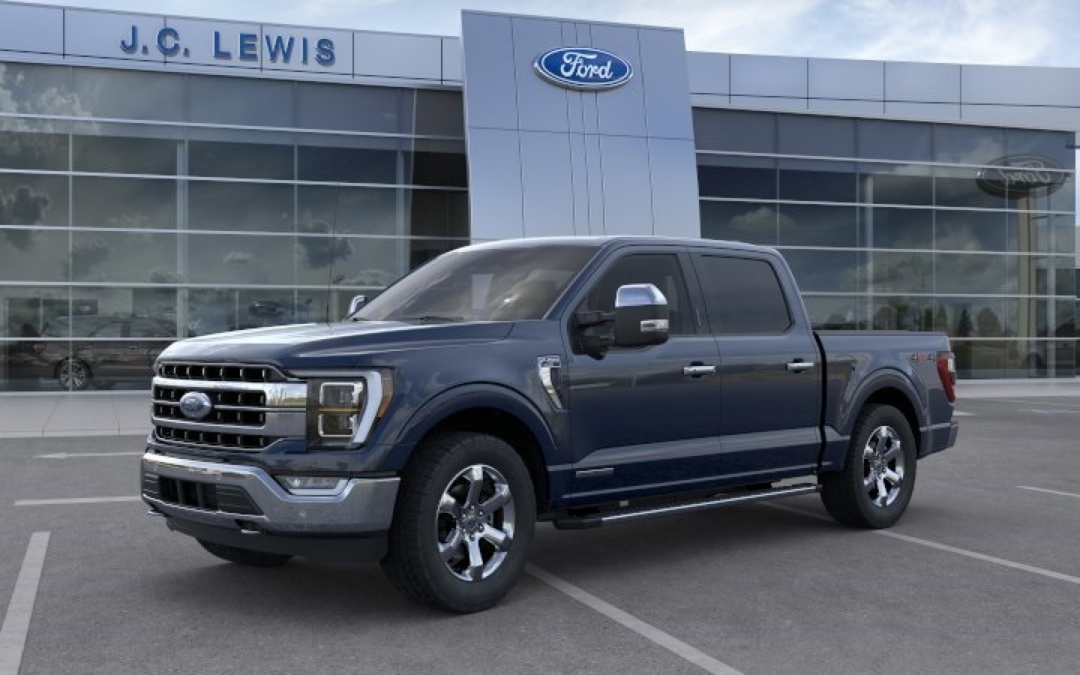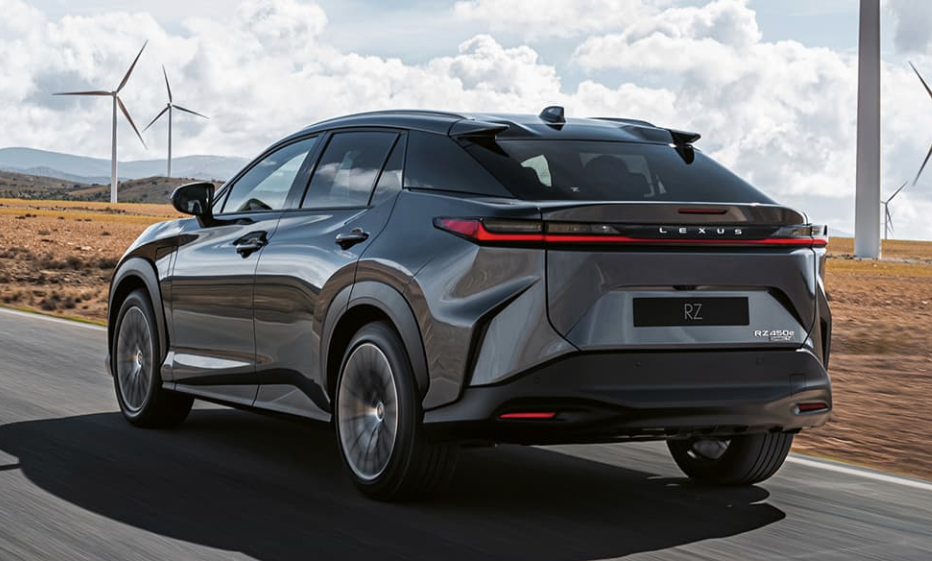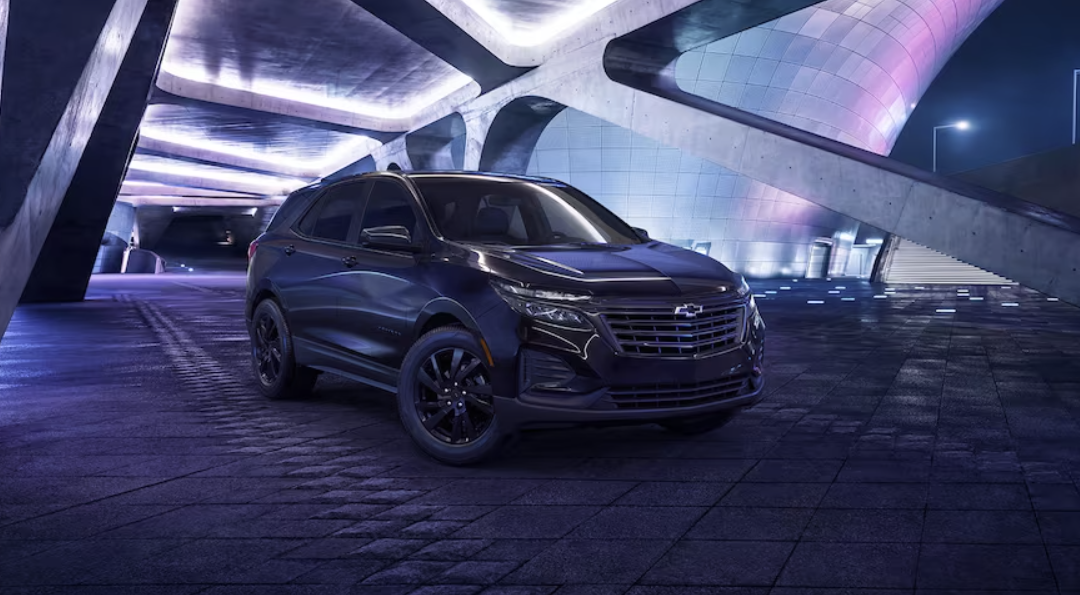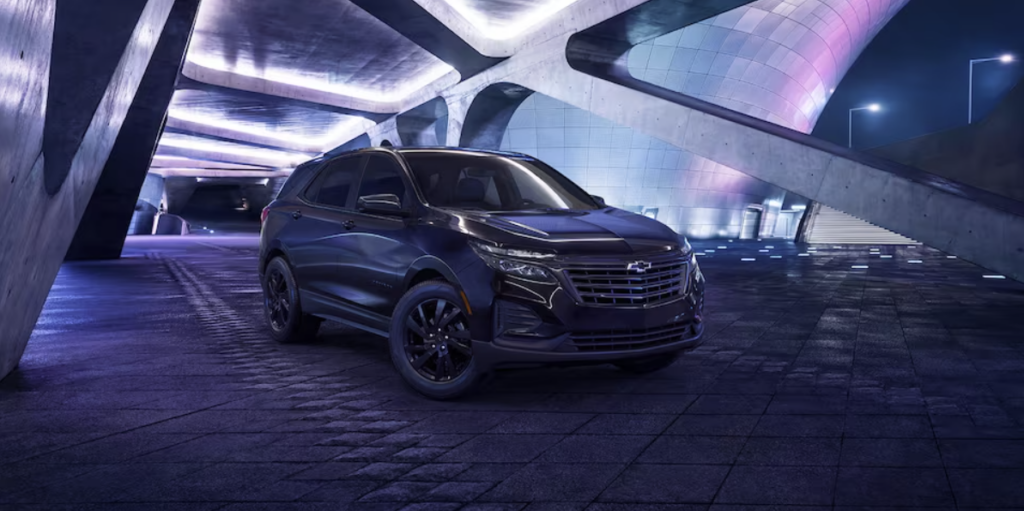CarEdge saved me over 4,500 dollars on a brand new Honda Pilot. I can't say thank you enough.
Price intelligence
Find a wide range of vehicle listings with market insights on new and used listings near you.


Help us personalize your CarEdge experience — it only takes a second.
Your answers help us personalize your CarEdge journey — we’ll follow up with tips and next steps that match your buying timeline.

It’s 2024, but that doesn’t mean that 2023 car models are a thing of the past. In fact, 796,000 new model year 2023 cars, trucks, and SUVs remain on dealership lots in February. While some car buyers may hesitate to take home a 2023 model in the new year, others see them as the best chance for negotiating a great deal. We used CarEdge Data to identify the new cars with the most remaining 2023 inventory right now.

In February of 2024, Ford, General Motors, and Stellantis brands have the highest inventory surplus of new 2023 models. This is what we’d expect from recent trends in our regularly updated guide to the most and least new car inventory.
Here’s a look at the remaining 2023 inventory on dealer lots. Dealers and OEMs alike are eager to sell these vehicles! Learn more about how Market Day Supply is calculated here.
| Make | Model | Market Day Supply | Total For Sale (1/2024) |
|---|---|---|---|
| Ford | F-150 | 107 | 95,948 |
| Nissan | Rogue | 91 | 47,188 |
| Ford | Explorer | 102 | 37,353 |
| Dodge | Charger | 469 | 35,495 |
| Dodge | Challenger | 344 | 26,024 |
| Ford | Mustang Mach-E | 269 | 22,629 |
| Ford | Escape | 76 | 21,998 |
| Jeep | Gladiator | 166 | 17,736 |
| Buick | Envision | 166 | 17,404 |
| Ford | Bronco 4-Door | 136 | 15,886 |
| Hyundai | Santa Fe | 48 | 15,643 |
| Ford | F-150 Lightning | 164 | 13,438 |
| Chevrolet | Traverse | 56 | 12,094 |
| Ford | Bronco Sport | 51 | 11,837 |
| Ford | Transit Van | 79 | 11,422 |
| GMC | Acadia | 117 | 9,933 |
| Toyota | Tacoma | 19 | 9,907 |
| Kia | Sorento | 51 | 9,736 |
| Ram | Ram 1500 | 106 | 9,663 |
| Volkswagen | ID.4 | 85 | 8,994 |
There are over 100,000 2023 F-150s and F-150 Lightnings still on sale in February. However, market day supply is ‘only’ half of one year because of the popularity of America’s best-selling truck (and best selling electric truck).
Ford’s Mustang Mach-E has rave reviews, but that hasn’t been enough to sell cars. There’s a 269-day supply of 2023 Mustang Mach-Es.
When sorting by market day supply, Stellantis brands soar to the top. In February, there are four Stellantis 2023 models with over 100 days of supply. It’s shocking to see how many Dodge Chargers and Challengers remain unsold. At current selling rates, it would take well over a year to sell these cars.
The Ram 1500 isn’t far behind. It would take nearly four months to sell remaining 2023 inventory at today’s selling rates.
The 2023 Buick Envision and GMC Acadia both have over 100 days of supply, with tens of thousands of cars remaining unsold. There are 12,000 unsold 2023 Chevrolet Traverses still out there, but as a quick seller, they will likely be sold in just two months.

The best SUV financing offer this month is the 2023 Hyundai Santa Fe. Finance the Santa Fe at 0% APR for 36 months, or 3.39% APR for 60 months. Plus, get up to $2,000 in cash incentives.
The Dodge Charger and Challenger both qualify for up to $2,000 in cash incentives.
The Ram 1500 Classic can be leased for just $470/month for 36 months, with $4,500 due. Buyers get up to $3,000 in cash allowance this month.
Ford fans can lease a 2023 F-150 Lariat for $577/month for 39 months with $6,525 due. The Ford Mustang Mach-E is one of the best EV lease deals in February. Lease a Ford Mustang Mach-E for $452/month for 39 months with $4,932 due.
The GMC Acadia is one of the best SUV lease deals this month. Lease the GMC Acadia at $249 per month for 24 months with $3,869 due.
👉 See ALL of February’s best new car deals here.
Remaining 2023 models present the best opportunity for negotiating thousands of dollars off of the price of a new car this month. With three quarters of a million 2023s remaining on dealership lots, something has to give. Here’s to hoping that at last, prices could be softening.
At CarEdge, we are committed to helping you navigate through these opportunities to secure the best possible deal, regardless of your budget. From free cheat sheets and guides to our comprehensive Concierge service, we are here to take the hassle out of the second-largest purchase most will ever make.
Don’t forget to check out the most and least inventory right now, and the best deals in January.

👉 Ready to outsmart the dealerships? Download your 100% free car buying cheat sheets today. From negotiating a deal to leasing a car the smart way, it’s all available for instant download. Get your cheat sheets today!

Choosing the right electric vehicle is about more than just reducing your carbon footprint. Reliability is a crucial factor, particularly as the cost of repairing an electric vehicle outside of warranty becomes a frequent headline. Here, we present the top 10 most reliable EVs for 2025, according to Consumer Reports.
👉 Looking for the most reliable car brands overall? Check it out here.

| Make | Model | Reliability Score | Overall CR Score | Base MSRP |
|---|---|---|---|---|
| BMW | i4 | 82 | 89 | $52,200 - $69,700 |
| Nissan | Ariya | 58 | 68 | $43,190 - $60,190 |
| Lexus | RZ | 57 | 67 | $58,500 - $64,000 |
| Kia | Niro EV | 54 | 70 | $39,600 - $44,600 |
| Audi | Q4 e-tron | 54 | 72 | $49,800 - $58,200 |
| Hyundai | IONIQ 6 | 50 | 76 | $37,500 - $53,650 |
| Porsche | Taycan | 49 | 78 | $90,900 - $197,500 |
| Genesis | GV60 | 47 | 74 | $53,800 - $71,350 |
| Ford | Mustang Mach-E | 43 | 68 | $42,600 - $61,600 |
| Tesla | Model 3 | 42 | 69 | $40,240 - $53,240 |
👉 These are the best EV warranties

| Make | Model | Consumer Reports Reliability Score |
|---|---|---|
| Lexus | RZ | 57 |
| Hyundai | IONIQ 6 | 50 |
| Porsche | Taycan | 49 |
| Nissan | Ariya | 58 |
| BMW | i4 | 82 |
| BMW | iX | 29 |
| Kia | Niro EV | 54 |
| Kia | EV6 | 31 |
| Audi | Q4 e-tron | 54 |
| Toyota | bZ4X | 38 |
| Tesla | Model 3 | 42 |
| Genesis | GV60 | 47 |
| Ford | Mustang Mach-E | 43 |
| Genesis | GV70 Electric | 35 |
| Tesla | Model Y | 41 |
| Audi | Q8 e-tron | 26 |
| Ford | F-150 Lightning | 28 |
| Hyundai | IONIQ 5 | 30 |
| Lucid | Air | 7 |
| Jaguar | I-PACE | 30 |
| Honda | Prologue | 30 |
| Tesla | Model S | 35 |
| Volkswagen | ID.4 | 29 |
| Tesla | Model X | 24 |
| Mercedes-Benz | EQS SUV | 30 |
| Rivian | R1S | 9 |
| Mercedes-Benz | EQE SUV | 30 |
| Mercedes-Benz | EQE | 30 |
| Rivian | R1T | 20 |
| Mercedes-Benz | EQS | 30 |
| Polestar | Polestar 2 | 25 |
| Kia | EV9 | 42 |
| Subaru | Solterra | 38 |
| Chevrolet | Blazer EV | 5 |

We have a number of EV enthusiasts on the CarEdge team, from Tesla fans to Hyundai IONIQ 5 owners. In our opinion, Consumer Report’s EV reliability ratings need to be taken with a grain of salt. Several of the best-rated electric vehicles on the list have some of the slowest charging, lowest range, and in some cases, all-around poor reviews.
Take the all-new Lexus RZ for example. Although it’s a Lexus, it shares the same electric powertrain with the Toyota bZ4X and even the Subaru Solterra. In Out of Spec’s test, the RZ went just 176 miles on the interstate at 70 miles per hour on a full charge in warm weather. Most of the competition is good for at least 200 miles on the highway between charging stops.
Much of the same could be said about the Nissan Ariya, Audi Q4 e-tron, and overpriced Kia Niro EV.
The best-equipped EVs on the Consumer Reports reliability list are, in terms of charging speeds and range, the Hyundai IONIQ 6, Tesla Model 3, Kia EV6, and BMW’s electric offerings. These models offer more range, and less time spent at charging stations.
If you’re planning to keep your next vehicle for years to come, and you’re willing to exchange convenience on road trips for fuel savings and slashing tailpipe emissions, then 2025 is a good time to go electric. If you’re likely to need an upgrade in a few years, we strongly recommend an EV lease. Resale values continue to undergo wild swings in the used EV market. This will continue as better-equipped EVs hit the market in years to come.
👉 See the best EV lease deals this month, or check out the best EV financing offers


As 2023 comes to a close, the new car market is brimming with opportunities for big savings. With an increase in inventory and the arrival of 2024 models, Mazda and Subaru dealers, along with their manufacturers, are feeling an increased urgency to sell off their current stock. Here, we’ve highlighted the best year-end deals for Mazda and Subaru in 2023, with the spotlight on low APR SUVs available for a limited time.

Starting MSRP: $29,300
Current Market Day Supply: 115 days
Negotiability Score: High
0% APR for 60 months + No payments for 90 days (ends 1/2/24)
The CX-5 comes with standard all-wheel drive, a rarity outside of Subaru. 2024 model year CX-5s have recently arrived at dealership lots, and with zero percent financing, it’s clear that Mazda is looking to sell them immediately. Mazda also has several models at 0.9% to 1.9% APR in December, including the popular CX-30, CX-50, and the large CX-90.
2024 Mazda CX-5 dealer inventory is down slightly over the past month, from 144 days of supply to 115 days of supply. That’s still twice the market norm of roughly 60 days. This indicates that Mazda dealers should be willing to negotiate, at least before the end of 2023. Dealers and salespeople are eager to meet year-end sales targets.
See 2024 Mazda models at $500 below invoice, and 2023 Mazda models at $1,000 below invoice!
2024 Mazda CX-90

Starting MSRP: $39,595
Current Market Day Supply: 135 days
Negotiability Score: High
0% APR for 36 months + No payments for 90 days (ends 1/2/24)
This Mazda offer applies to the Turbo Select, Turbo Preferred, Turbo Preferred Plus, Turbo Premium, or Turbo Premium Plus trims only. The 3-row CX-90 is Mazda’s largest model, with 74.3 cubic feet of cargo volume with the seats down. It comfortably seats 7 passengers. Reviewers agree that the all-new CX-90 is a shockingly luxurious mid-size SUV, and represents incredible value at the price point.
With so many CX-90s shipped to dealer lots, inventory is currently very high at 135 days. With a financing offer like this, we’re left wondering why more SUV buyers aren’t taking advantage of this deal.
See Mazda CX-90 inventory priced at $500 below invoice!
Learn more about offer details.
2023 Mazda CX-30

Starting MSRP: $22,950
Current Market Day Supply: 32 days
Negotiability Score: Low
0% APR for 36 months + No payments for 90 days (ends 1/2/24)
The 2024 CX-30 gets a $2,000 price increase for 2024, so buyers are taking advantage of great financing offers for remaining 2023 CX-30 inventory. With standard all-wheel drive, 191 horsepower and combined 29 miles per gallon, this crossover is a compromise that simply works.
There are only 2,000 2023 CX-30s remaining nationwide, so this deal won’t last.
See Mazda CX-30 inventory priced at $1,000 below invoice!
Learn more about offer details.
Subaru is ending the year with a rare offer for its second most popular model, the Outback. If you haven’t sat in an Outback for several years, you’d be surprised how far this model has come. Featuring modern tech that perfectly compliments the Outback’s beloved all-terrain capability, this financing offer is one to get excited about.
2024 Subaru Outback

Starting MSRP: $28,895
Current Market Day Supply: 85 days
Negotiability Score: Above Average
1.9% APR for 48 months (ends 1/2/24)
Currently, there are nearly 27,000 Outbacks sitting on dealer lots, of which 26,000 are new 2024 models. With 85 days of market supply, there are more Outbacks available than normal. Negotiability is possible, but not what we’d consider likely. Dealers know the Outback is popular, and may be willing to hold on to them into the new year.
See Subaru Outback inventory with local market data.
For new car shoppers considering Subaru and Mazda, December 2023 is an exceptional time to find the year’s most attractive deals. With a range of incentives, the year-end rush to sell, and the availability of 2023 Subaru and Mazda models, holding off until 2024 might mean missing out on current opportunities.
The situation in the used car market, however, is less clear-cut. Recent trends indicate a drop in prices, but the full impact of these changes and their duration remains to be seen. Particularly for Subaru and Mazda used cars, the market’s fluctuating dynamics make predicting the best time to buy in 2024 somewhat uncertain. See our December used car market update here.
Free Car Buying Help Is Here

Ready to outsmart the dealerships? Download your 100% free car buying cheat sheets today. From negotiating a deal to leasing a car the smart way, it’s all available for instant download. Get your cheat sheets today!

CarEdge is offering $200 off of mechanical and electronics warranties through the end of March. Better yet, CarEdge’s extended warranties are the exact same coverage that you get at dealerships, but for hundreds of dollars less. Here’s everything you need to know about the best extended warranty deal today.

With CarEdge’s $200 off warranty discount, you can get an extended warranty for several hundred dollars less than at the dealerships.
Why are CarEdge’s extended warranties so affordable? It’s simple: there’s a set, small markup to help the company keep the lights on, with no gimmicks or commissions. While most car dealers mark up warranties by several hundred dollars, CarEdge keeps just a fraction of that.

Under Mechanical Warranty coverage, CarEdge offers exclusionary coverage for most vehicles. This is insurance industry jargon that means your vehicle is covered from “bumper-to-bumper” for everything but normal wear and tear, routine maintenance, and anything that is explicitly listed in the contract. Learn more about what’s covered.
CarEdge also offers an Electronics Warranty, which protects your wallet from costly electronics repairs. Your car is a rolling computer, so why risk being on the hook for hundreds of dollars in repairs, if not more? View a sample contract to learn more about what’s covered.
Have additional questions? Give us a call at 800.674.5042 for immediate assistance.

Stay safe when you’re on the road with 24/7 towing (up to 150 miles) with no out of pocket cost. We’ll put a spare on for you, jump your battery, or assist with key lockout. CarEdge warranties are built on trust, something that’s hard-earned but easily lost. We won’t let you down.
Save $200 on Electronic and Mechanical Warranties through March 31, 2024. Get your free quote in just a few minutes.
Our plans are managed by AUL Corporation, a nationally-recognized, award-winning plan administrator with over 30 years of dealership experience and an A+ rating from the Better Business Bureau. AUL works with hundreds of the largest auto dealers in America, and is backed by an “A” rated carrier with over $32 billion in assets.
In the era of auto warranty scams and annoying robocalls, CarEdge set out to do things differently. Over the past three years, CarEdge has earned the trust of thousands of drivers nationwide by making a simple promise: no robocalls, no spam, ever.
The proof is in the pudding. Check out these 100% authentic CarEdge reviews.

These savings run out on March 31, 2024. Get a free, no-hassle quote in minutes at CarEdge.com/extended-warranty.
We’re here to help!

Leasing is the most affordable way to get into a new car for many drivers, and 2023’s year-end sales present a rare opportunity to secure a phenomenal deal. In December, $0 down lease offers are finally here for popular SUV models. These are the best SUV and crossover lease deals right now.
👉 Is leasing right for you? Check out our guide to understanding your lease.

Volkswagen has the best SUV lease offers right now. All of the following VW SUVs are eligible for $0 down, $0 due at signing, and $0 first month’s payment:
See Volkswagen listings with local market data, or learn more about this deal.

$0 due at lease signing, $489 per month for 36 months
See Palisade listings with local market data, or learn more about Hyundai lease deals.

$299/month for 24 months with $1,409 due at signing
$309/month for 24 months with $2,059 due at signing
See Chevrolet listings with local market data, or learn more about this deal.

$349/month for 36 months with $2,999 due at signing
$280/month for 36 months with $2,999 due at signing
See Mazda listings with local market data, or learn more about this deal.

Ready to outsmart the dealerships? Download your 100% free car buying cheat sheets today. From negotiating a deal to leasing a car the smart way, it’s all available for instant download. Get your cheat sheets today!